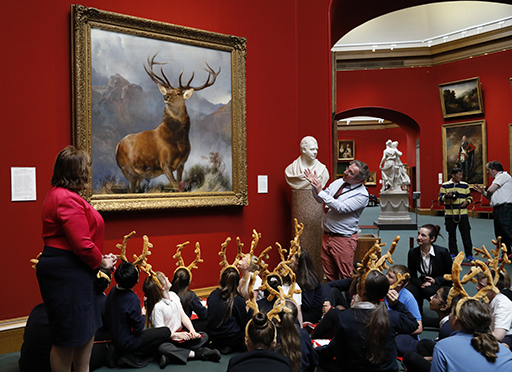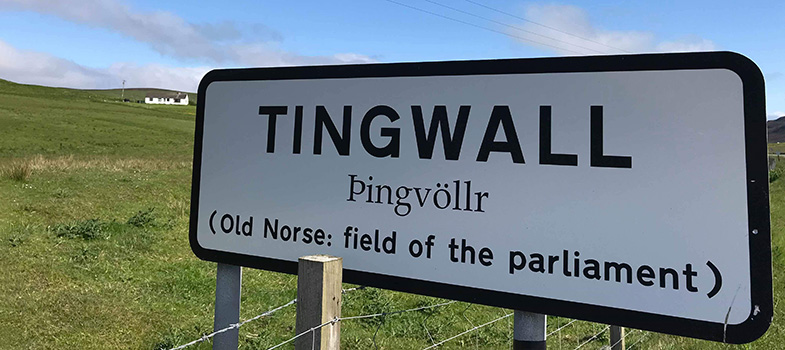7.2 The Monarch of the Glen

Completed in 1851 by the English painter Sir Edwin Landseer, The Monarch of the Glen is an oil-on-canvas painting of a red deer stag. It had been commissioned as part of a series of three panels to hang in the Palace of Westminster in London. The image became one of the most popular paintings throughout the 19th century. Reproductions in steel engraving sold very widely and the painting itself was then bought by companies to use in advertising.
By the mid-20th century the painting had become quite the cliché, described by the Sunday Herald [Tip: hold Ctrl and click a link to open it in a new tab. (Hide tip)] as “…the ultimate biscuit tin image of Scotland: a bulky stag set against the violet hills and watery skies of an isolated wilderness.” (Jeffrey, 2005)
Language Links
The stag in the painting has twelve points on his antlers, which in deer terminology makes him a "royal stag" but not a "monarch stag", for which sixteen points are needed. The DSL definition of glen is a valley between hills or mountains. Early examples in place-names are Rutherglen (c 1160) or le Glen (1292).
Often, Scots, being a Germanic language, has close links to Scandinavian and European languages. In this case, the word glen has its roots in a Celtic language - Gaelic. It comes from the Scottish Gaelic and Irish gleann (earlier glenn).
In 2017 the National Gallery of Scotland launched a successful campaign to buy the painting, finally achieving the acquisition for £4 million. The painting is now part of the Scottish National Gallery in Edinburgh, on display in Room 12.
With that £4m in mind, now read the lovely tale of Orla Macdonald and The Monarch of the Glen, ‘A Painted Stag and Skooshy Cream: A Tale of Tough Negotiation Unfolds...’ as published on the website of the Scottish National Gallery. The 13 year old Orla painted her own version of this painting and her father, Gary, wrote to the National Gallery – as a reaction to the difficult negotiations around the acquisition of the original by the Edinburgh gallery - offering it for sale to them for just £2 million.
Activity 5 
In this activity you will take a closer look at the communication between Orla’s father, Gary, and the Director-General of the National Galleries of Scotland.
Part 1
Read the letters by Gary Macdonald and Sir John Leighton.
- While reading, highlight the examples of Scots language used in the letters by Gary Macdonald.
- Translate into English the Scots words you identified.
Answer
b. These are the translations of the Scots words used by Orla’s father.
- folk (people)
- wee (little)
- gon yerself (go on yourself)
- awfy (awfully)
- skooshy (squirty)
Part 2 
Why do you think Gary Macdonald uses a smattering of Scots in his letters to the National Galleries?
What effect does his use of Scots have on you as a reader?
Answer
This is a model answer. Your thoughts might be different.
I think that by using Scots, Gary makes the letter sound less formal and underlines that Orla’s proposition to the National Galleries should not be taken too seriously. His use of Scots in otherwise English language contexts underlines what was mentioned in other units of this course, that Scots is often called upon to contribute an element of humour to communication.
7.1. Glasgow and famous female artists
